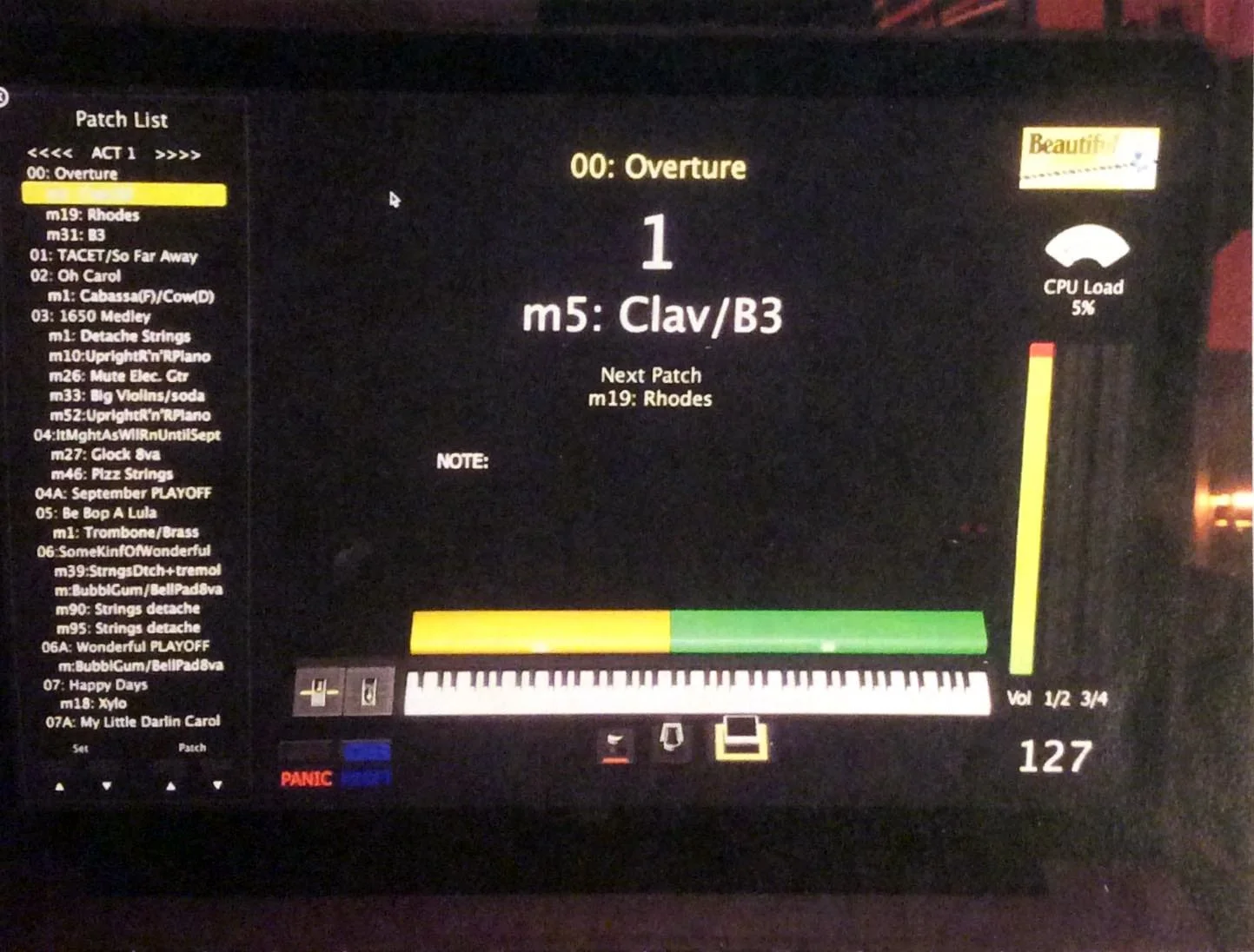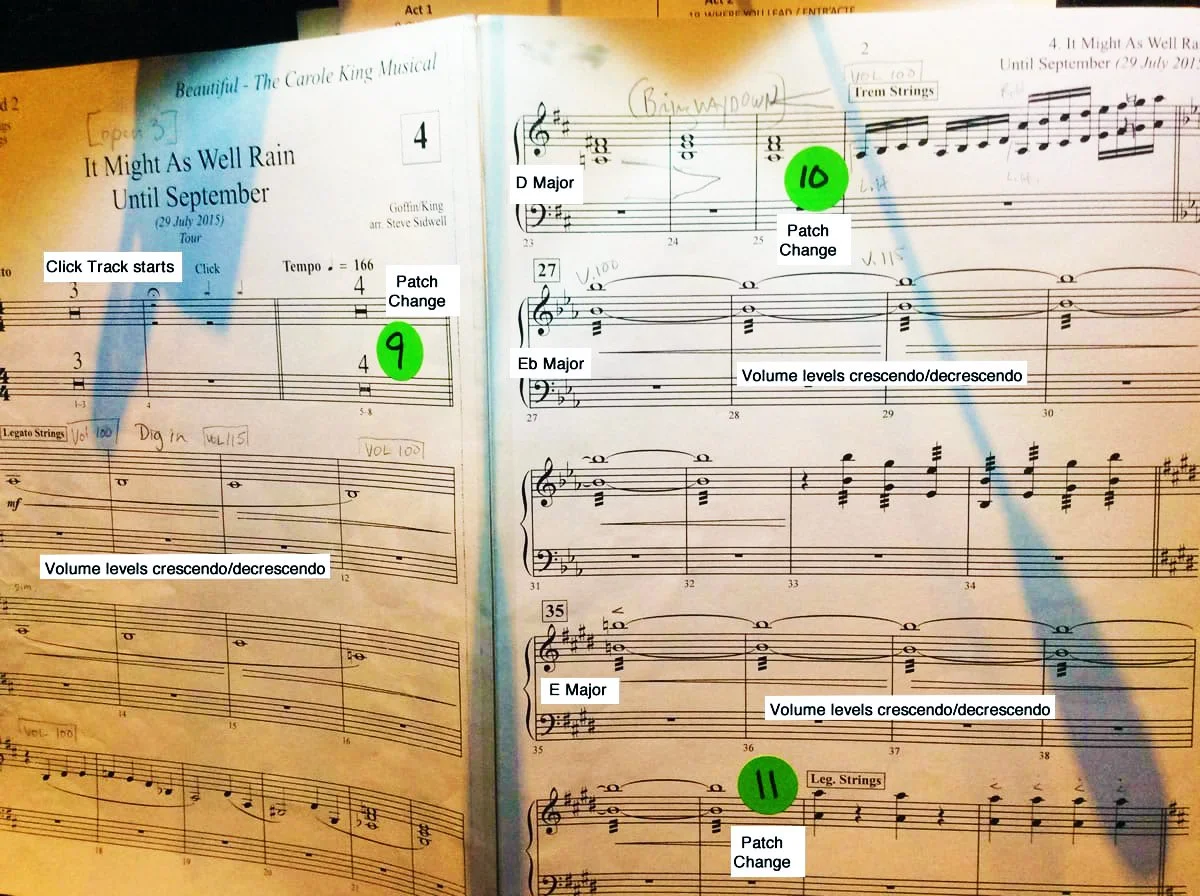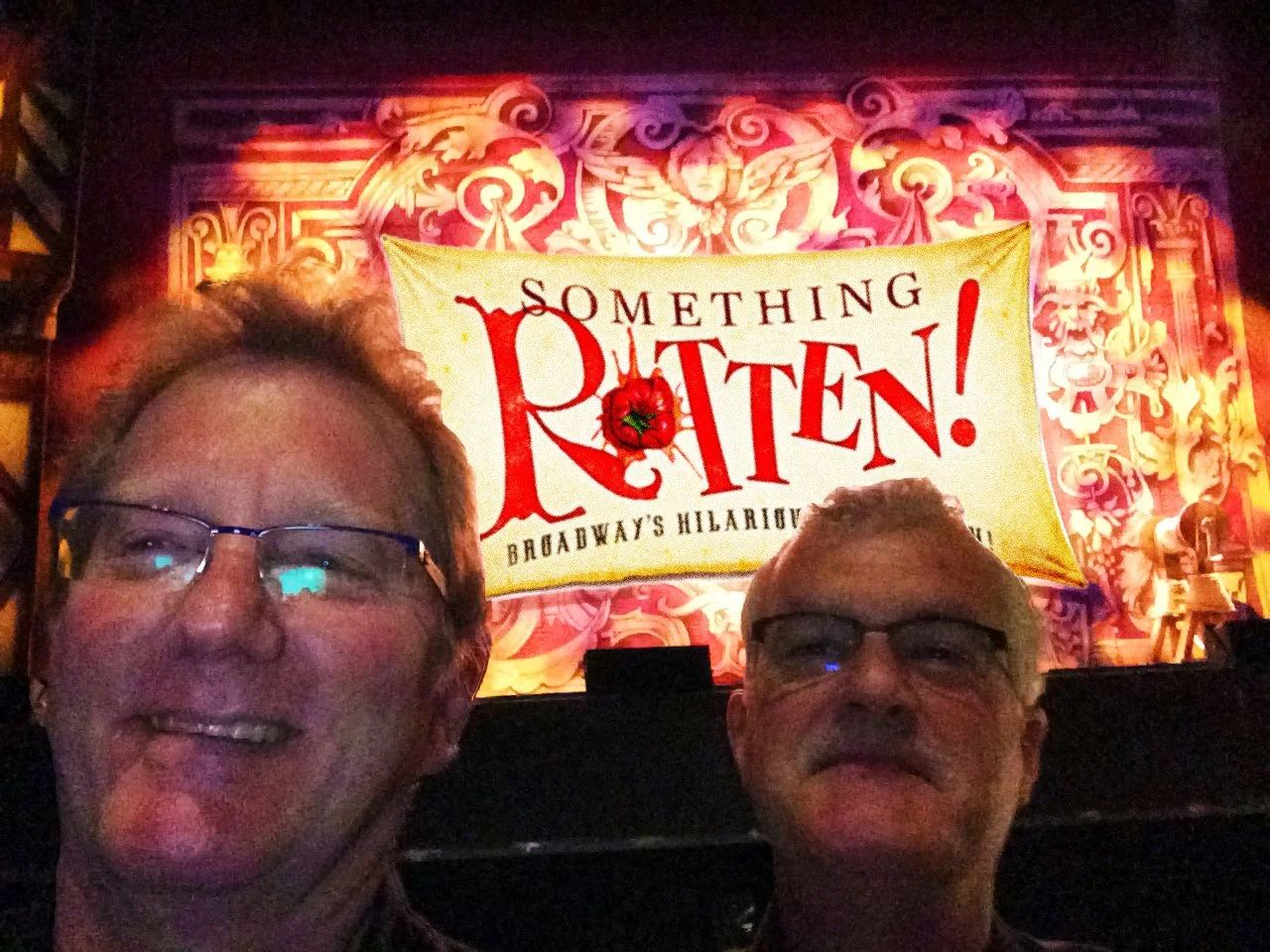Behind the Curtain: A Broadway Show Pianist’s Setup
Beautiful – The Carole King Musical
A Broadway Show Pianist
As a pianist, my journey has taken me through countless performances, but working as a pit orchestra keyboardist for Broadway shows is an entirely unique experience. It’s more than just being a solid pianist, ensemble player, or even a jazzer—it’s about mastering technical precision, multitasking, and working seamlessly as part of a highly coordinated team.
One of the shows I had the pleasure of performing was the national tour of "Beautiful – The Carole King Musical", a production filled with 1960s and 1970s rock and ballads. I performed during its run at Bass Concert Hall in Austin, TX. Here’s a behind-the-scenes look at what goes into a modern setup for a Broadway pit orchestra keyboardist.
The Heart of the Setup: MainStage
At the core of the keyboard setup is MainStage, an Apple application running on a MacBook Pro. This software manages everything from pedal assignments to keyboard sounds, volume levels, and patch changes. It’s the central brain that allows for fluid transitions between instruments and effects, all of which are vital in a live show.
Navigating the Charts
The sheet music for Broadway shows is incredibly detailed, with precise instructions for volume levels, patch changes, and special effects. You’re not just playing the notes—you’re also following directions for key touches, Leslie switches, and sound dynamics.
The Panic Key
One notable feature in this setup is the Panic Key, (orange), which clears all patches and resolves stuck notes in case of a technical glitch. It’s a lifeline that ensures the show can go on without disruption.
The Art of a Broadway Show Pianist
Being a Broadway show pianist is about more than technical skill—it’s about blending artistry with precision. You’re responsible for creating a seamless musical experience that complements the performers on stage, all while managing a complex setup that merges technology and tradition.
Whether you’re playing lush ballads or upbeat rock tunes, every performance is a collaboration between the pit, the stage, and the audience. And when it all comes together, it’s nothing short of magic.
Headshot of jazz pianist Hank Hehmsoth and guitarist Russell Scanlon in front of the full-stage Broadway projection backdrop for the national tour of 'Something Rotten!,' inspired by Shakespeare's quote 'something rotten in Denmark.'
Explore More
Check out 100 Years of Hehmsoth Legacy at the Paramount Theatre
Check out my MacDowell story, From West Side Story to MacDowell, and read about this unique tradition “Tombstone”.
Discover my blog Pathways
The Pit Setup
The pit is located beneath the stage, creating a soundscape that blends into the live performance above. Each musician has a personalized setup with headphones and video monitors mounted on their music stands. These monitors allow us to follow both the live conductor and a video feed from the stage, ensuring perfect synchronization with the actors and singers.
The music stand itself is wide enough to display up to eight pages of sheet music, providing plenty of space to manage the show’s intricate charts and cues.
The Pedals: "Smart Feet" in Action
As a keyboardist, your feet become just as essential as your hands. My setup includes:
Volume Pedal: Controlled with the left foot to dynamically adjust sound levels in real-time.
Sustain Pedal: Managed with the right foot to add expression and legato phrasing.
Patch Forward/Back Switches: Used to navigate through sound patches for specific parts of the show.
Leslie On/Off Switch: To toggle the rotating speaker effect for organ sounds.
Having all these foot controls demands not only coordination but also quick thinking to recover if something goes wrong—like accidentally advancing patches mid-performance.
The Pre-Show Routine
Before the curtain rises, there’s always a moment to connect with the band. For the “Beautiful” production at Bass Concert Hall, I shared the pit with some of Austin’s top musicians. Featuring Eric Johnson (trumpet), Paul Deemer (trombone), John Mills (sax/flute), Hank Hehmsoth (keyboard), and Paul Baker (sax), these first-call musicians bring expertise and artistry to every performance. The audience is visible above the pit, creating a dynamic connection between the orchestra and the stage.
Conclusion
For students and anyone interested in the behind-the-scenes world of live Broadway shows, this is a glimpse into the demands and rewards of working as a pit orchestra pianist. It’s a career that challenges and inspires, requiring equal parts creativity, discipline, and technical expertise.










